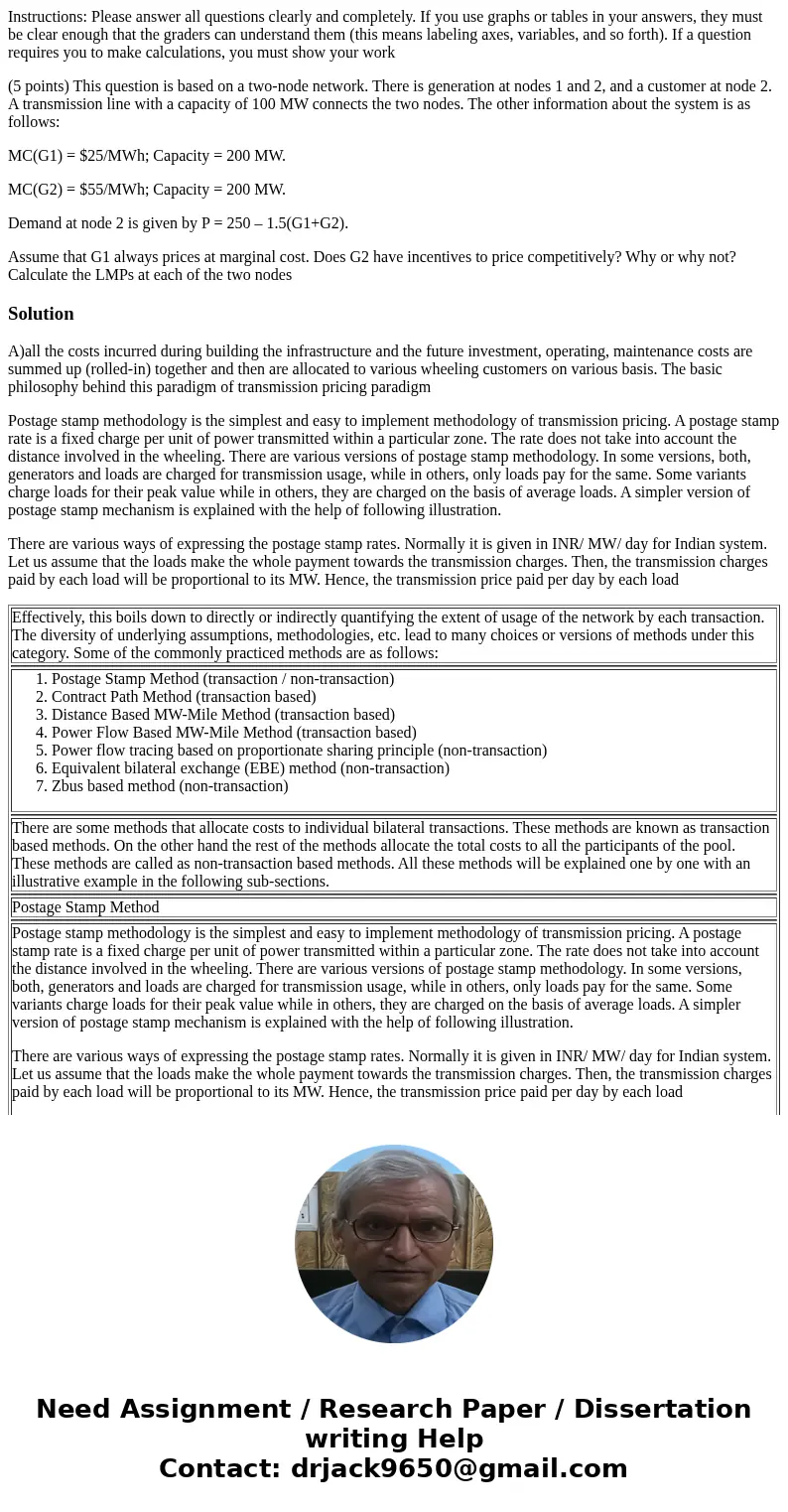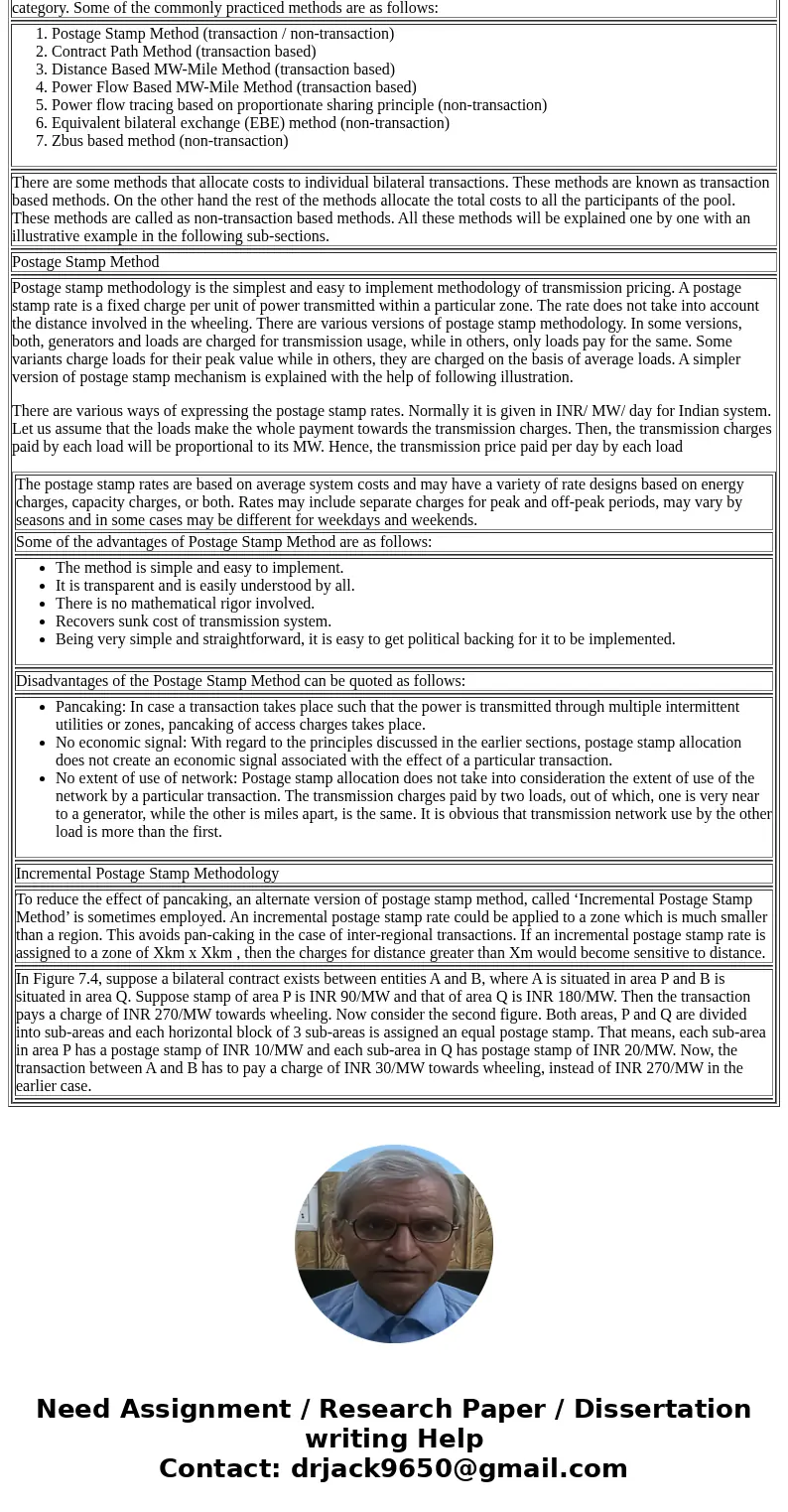Instructions Please answer all questions clearly and complet
Instructions: Please answer all questions clearly and completely. If you use graphs or tables in your answers, they must be clear enough that the graders can understand them (this means labeling axes, variables, and so forth). If a question requires you to make calculations, you must show your work
(5 points) This question is based on a two-node network. There is generation at nodes 1 and 2, and a customer at node 2. A transmission line with a capacity of 100 MW connects the two nodes. The other information about the system is as follows:
MC(G1) = $25/MWh; Capacity = 200 MW.
MC(G2) = $55/MWh; Capacity = 200 MW.
Demand at node 2 is given by P = 250 – 1.5(G1+G2).
Assume that G1 always prices at marginal cost. Does G2 have incentives to price competitively? Why or why not? Calculate the LMPs at each of the two nodes
Solution
A)all the costs incurred during building the infrastructure and the future investment, operating, maintenance costs are summed up (rolled-in) together and then are allocated to various wheeling customers on various basis. The basic philosophy behind this paradigm of transmission pricing paradigm
Postage stamp methodology is the simplest and easy to implement methodology of transmission pricing. A postage stamp rate is a fixed charge per unit of power transmitted within a particular zone. The rate does not take into account the distance involved in the wheeling. There are various versions of postage stamp methodology. In some versions, both, generators and loads are charged for transmission usage, while in others, only loads pay for the same. Some variants charge loads for their peak value while in others, they are charged on the basis of average loads. A simpler version of postage stamp mechanism is explained with the help of following illustration.
There are various ways of expressing the postage stamp rates. Normally it is given in INR/ MW/ day for Indian system. Let us assume that the loads make the whole payment towards the transmission charges. Then, the transmission charges paid by each load will be proportional to its MW. Hence, the transmission price paid per day by each load
| Effectively, this boils down to directly or indirectly quantifying the extent of usage of the network by each transaction. The diversity of underlying assumptions, methodologies, etc. lead to many choices or versions of methods under this category. Some of the commonly practiced methods are as follows: | |||||||||||||||
| |||||||||||||||
| There are some methods that allocate costs to individual bilateral transactions. These methods are known as transaction based methods. On the other hand the rest of the methods allocate the total costs to all the participants of the pool. These methods are called as non-transaction based methods. All these methods will be explained one by one with an illustrative example in the following sub-sections. | |||||||||||||||
| Postage Stamp Method | |||||||||||||||
| Postage stamp methodology is the simplest and easy to implement methodology of transmission pricing. A postage stamp rate is a fixed charge per unit of power transmitted within a particular zone. The rate does not take into account the distance involved in the wheeling. There are various versions of postage stamp methodology. In some versions, both, generators and loads are charged for transmission usage, while in others, only loads pay for the same. Some variants charge loads for their peak value while in others, they are charged on the basis of average loads. A simpler version of postage stamp mechanism is explained with the help of following illustration. There are various ways of expressing the postage stamp rates. Normally it is given in INR/ MW/ day for Indian system. Let us assume that the loads make the whole payment towards the transmission charges. Then, the transmission charges paid by each load will be proportional to its MW. Hence, the transmission price paid per day by each load
|


 Homework Sourse
Homework Sourse